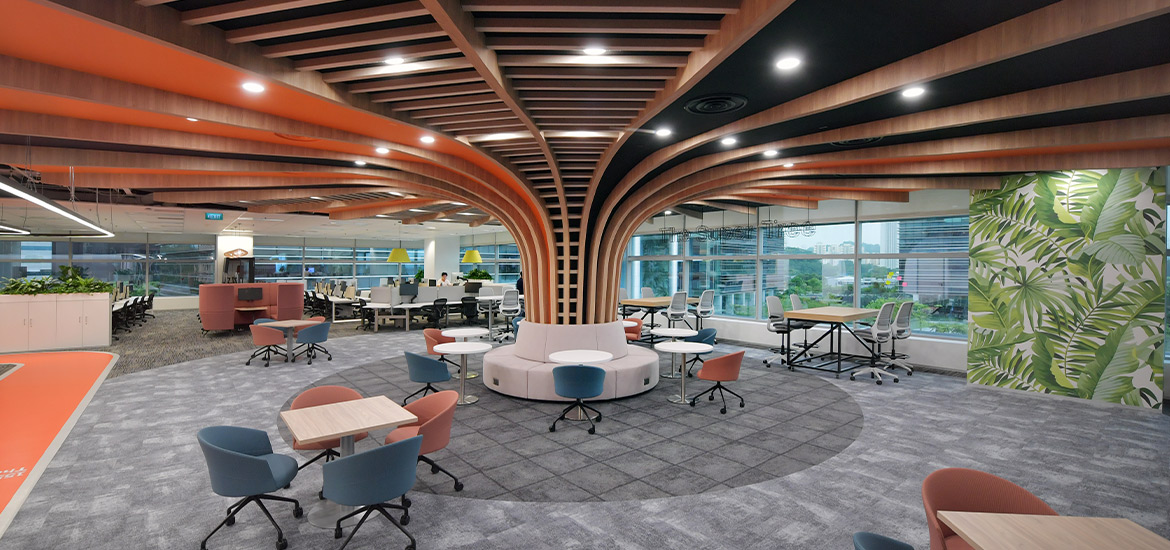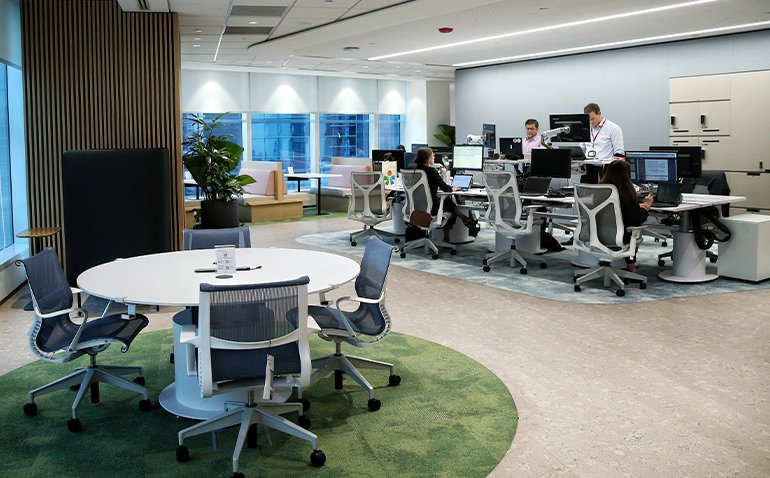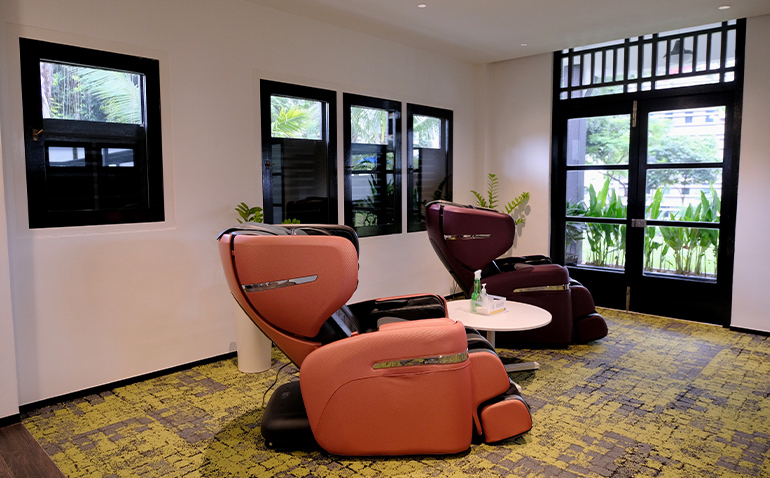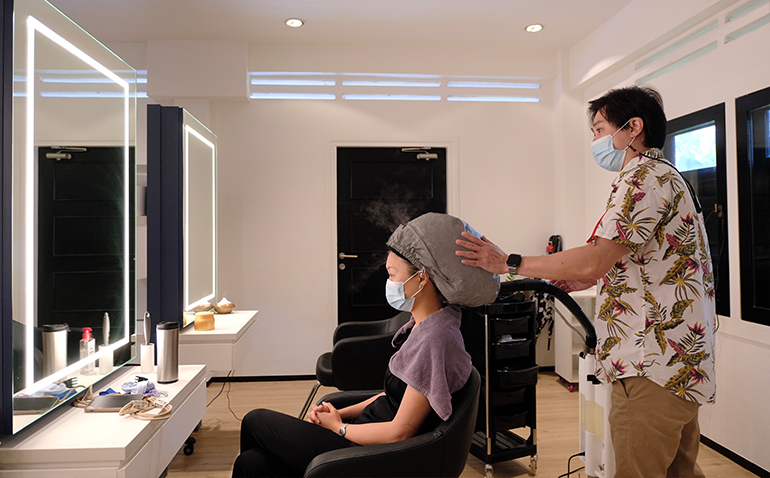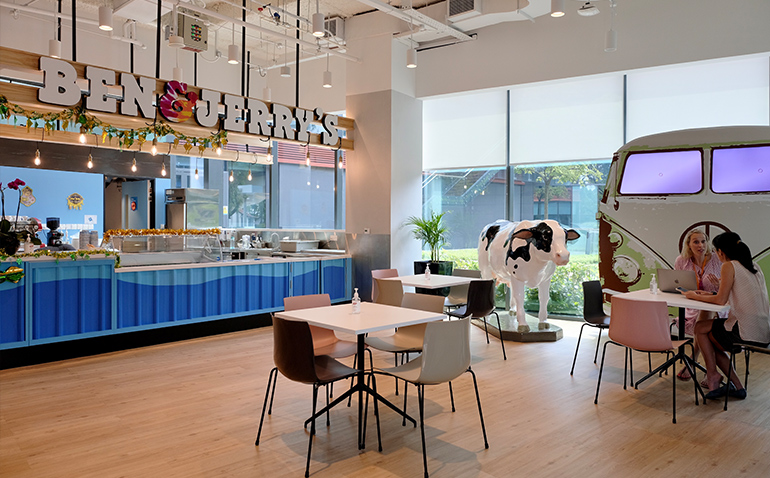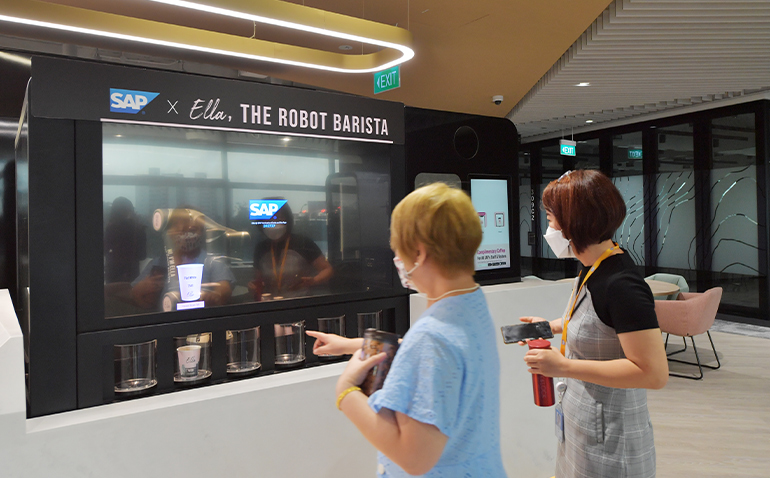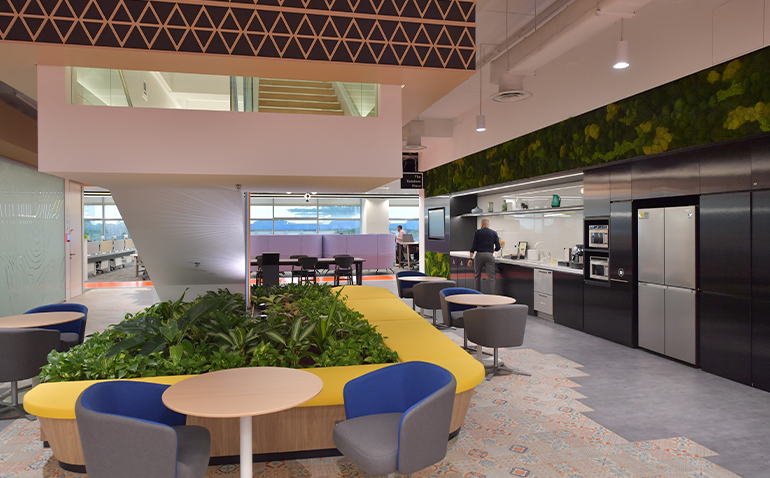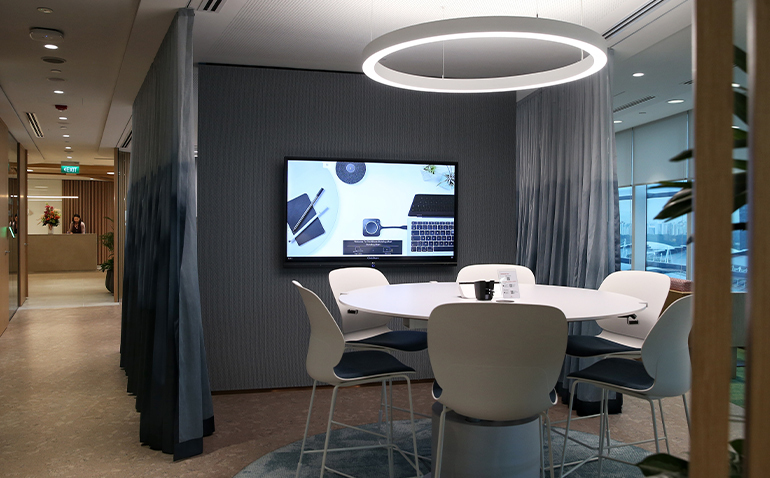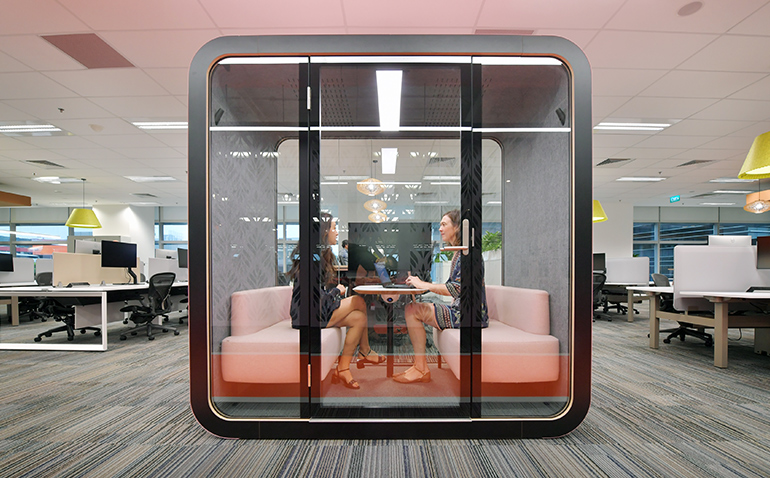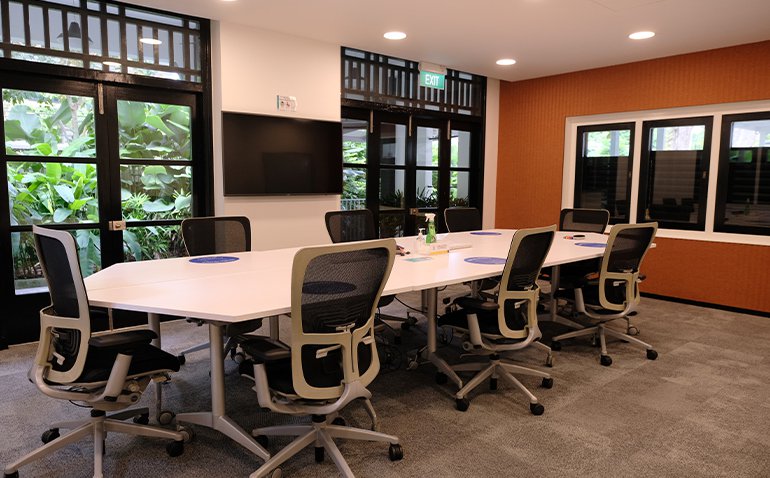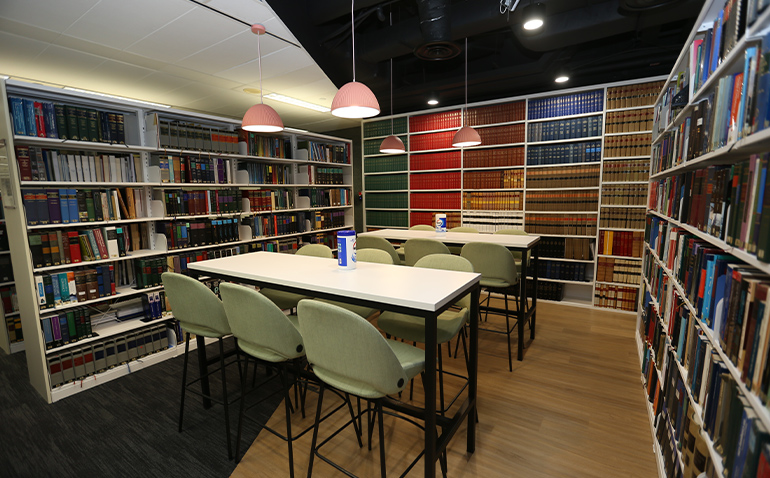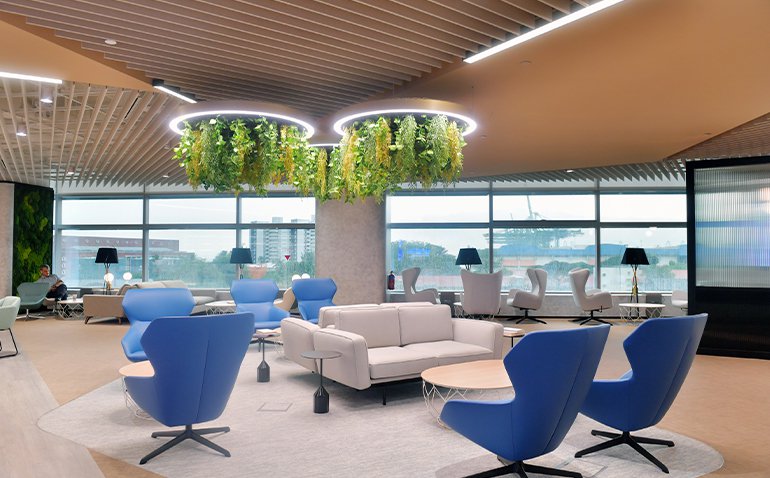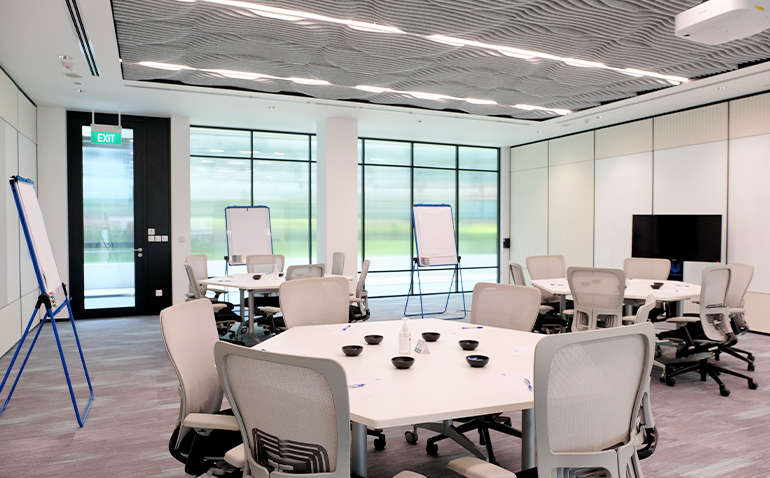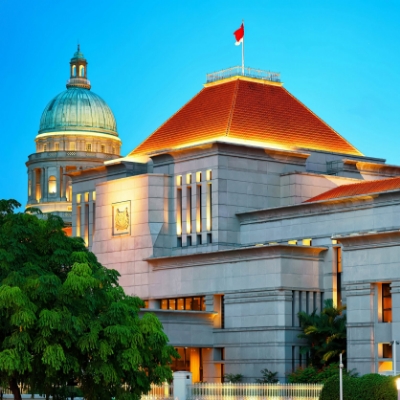More companies in Singapore are embracing a flexible and connected workplace. From creating more collaborative spaces to removing bosses' desks, The Straits Times looks at how some have transformed their offices.
Love or hate hot-desking, experts say the trend is here to stay.
Even as safe management measures in Singapore were relaxed since April 26, shifts towards giving employees flexibility to work from anywhere that accelerated during the pandemic have continued.
In offices, that means rows of desks and cubicles making way for spaces for collaboration and socialisation. One even added a hair salon.
Let's take a look at how some companies have transformed their offices.
No desks even for bosses
"Take a seat" has assumed a whole new meaning for staff at software giant SAP, with desks of all shapes and sizes now up for grabs at its Pasir Panjang office. There are no assigned desks across three floors of the office in Mapletree Business City - not even for its senior leaders but there are choices aplenty - high workbenches for those who like to stay standing, workstations designed for small groups, or cafe-style seats.
The German-headquartered multinational adopted a full hot-desking approach when it started revamping its offices in April 2021 with the aim of boosting collaboration among its 1,200 or so staff, as well as offer flexibility in how employees work.
